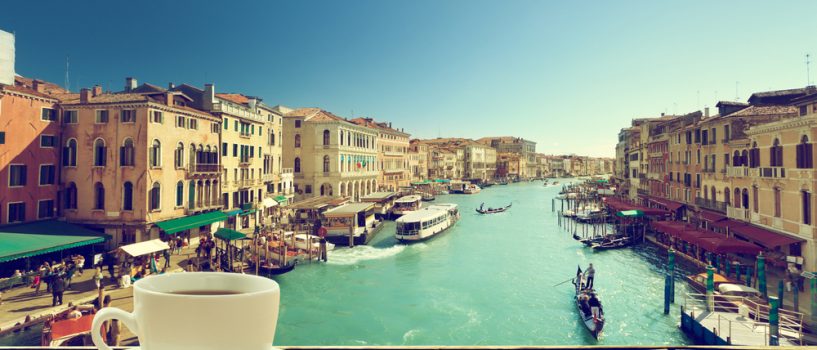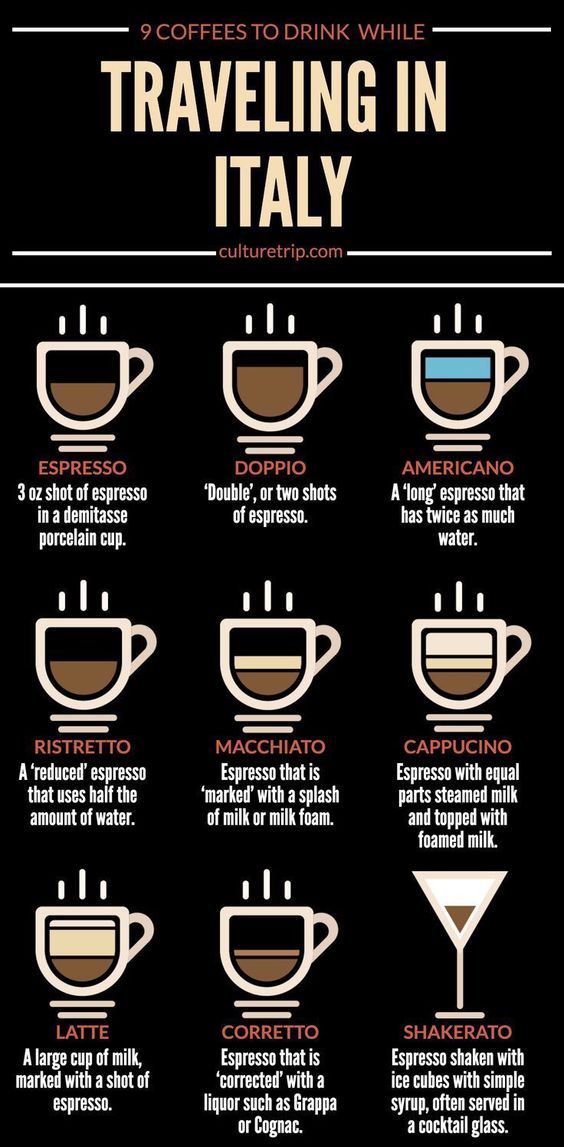One of the great pleasures of a trip to Italy is that first thimble of molten espresso. It reminds you what proper coffee is really like. But it’s also a sign of how seriously Italians take their beans. Nothing screams ‘tourist’ like someone sipping a cappuccino in the afternoon…
To make sure you blend in with the locals (excuse the pun), check out this at-a-glance infographic from Culture Trip. With these distinctions percolating in your mind, you’ll soon be filtering your corretto from your shakerato, your latte from your doppio. Starbucks will never look the same again.
1. Espresso Etcetera
This is pretty self-explanatory: an espresso is a tiny shot of very strong coffee, usually with sugar added by the customer themselves. It’s worth noting, though, that you should order this simply by using the word ‘caffè’. If you’re after a double shot, then ask for a ‘doppio’ and if you’d rather an even more intense hit, then order a ‘ristretto’ which uses half the water (in Italy, an ‘Americano’ is the opposite of a ‘ristretto’, i.e. it’s made with more water).
2. Milky Coffee
A macchiato is an espresso with a small drop of milk or foam added. While a macchiato is still served in a tiny cup, a cappuccino (half coffee, half milk) and a latte (lots of milk with a shot of espresso) come in bigger mugs. Many Italians choose milky drinks at breakfast, accompanied by a pastry or two. From lunchtime onwards, it’s black all the way…
3. Caffeine Plus
If you’re feeling like something more exotic, then a shakerato is made by blending ice cubes and espresso in a cocktail shaker and then adding syrup. Last but not least, a corretto is a shot laced with an alcoholic drink like Cognac or Grappa. Different regions of Italy have different corretto specialities: Livorno, for example, is famous for its heady concoction of coffee, dark rum, sugar and lemon peel.
So, on your next trip to Italy, why not hop straight from your airport transfer to a café, find a space at the marble-topped bar and savour the clatter of coffee spoons, the whirr of the machines, and the lively conversations of Italians doing what they do best? Just remember, it’s far cheaper – and more authentic – to drink standing up at the bar rather than to sit down.









